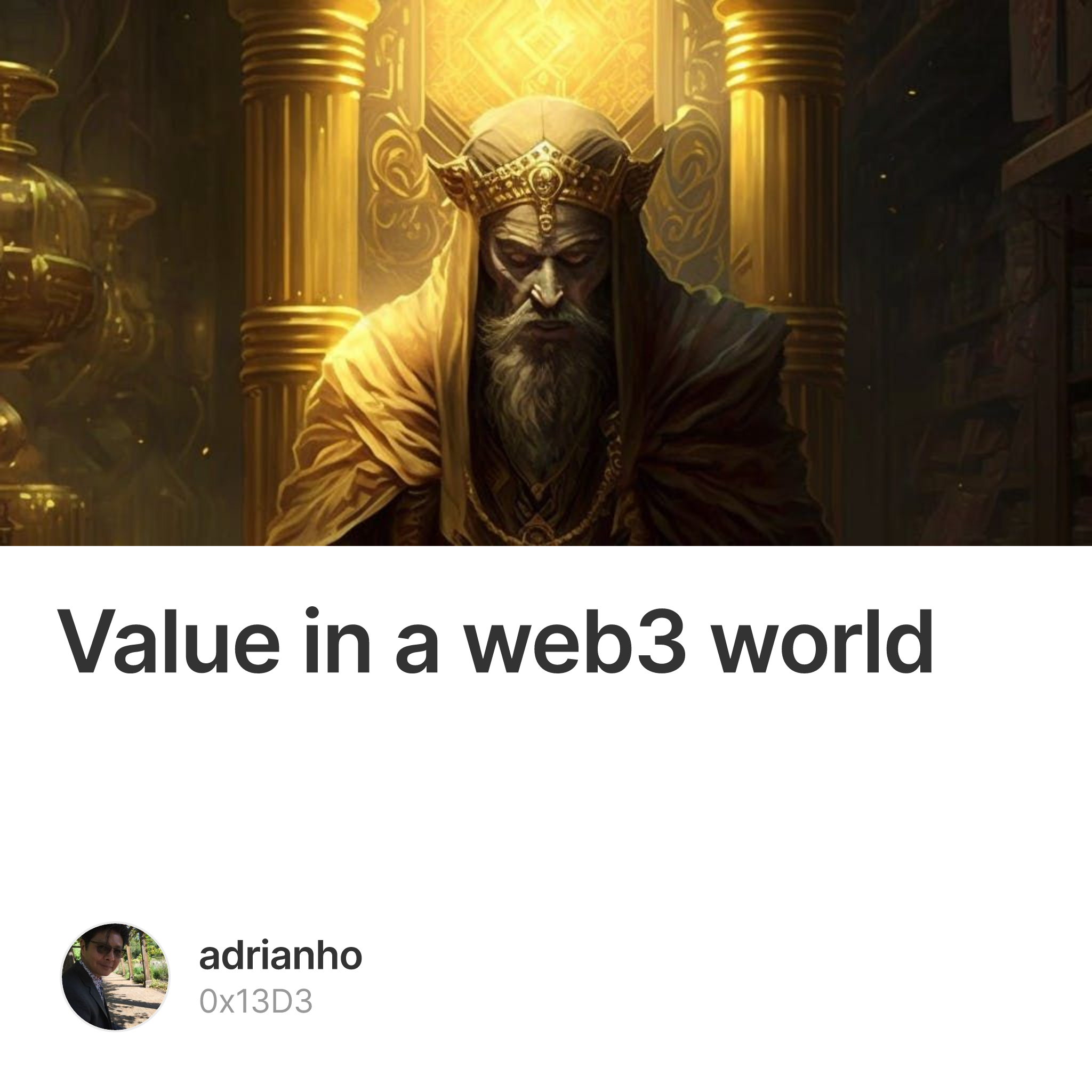While it’s generally agreed that web3 will generate an explosion of value similar to the last iterations of the Web, the nature of that value creation is less clear. In traditional economies money is made by hoarding money and moving it, but web3 has been expressly designed to break these patterns. As a result, it’s far easier to see how web3 (also like previous iterations of the Web) will destroy value more than create it.
The challenge may be our definition of value and (IMO) one of the biggest promises of web3 is to enable a redefinition of value away from the things that can be monetized with fiat currency, towards those things that create real benefits for people and the planet.
The natural (pun intended) model for this is ecological ecosystems, and the research on ecosystem services that we used on some early thinking about ecosystem brands a few years ago.
The UN-led, Millennium Ecosystem Assessment, completed in 2005 formalized 4 different services that actors in an ecosystem perform. These are:
Provisioning products obtained from ecosystems such as food, fresh water, wood, fiber, genetic resources and medicines.
Regulating : benefits obtained from the regulation of ecosystem processes such as climate regulation, natural hazard regulation, water purification and waste management, pollination or pest control.
Supporting or habitat: services that are necessary for the production of all other ecosystem services. Some examples include biomass production, production of atmospheric oxygen, soil formation and retention, nutrient cycling, water cycling, and provisioning of habitat
Cultural: non-material benefits people obtain from ecosystems through spiritual enrichment, cognitive development, reflection, recreation, and +aesthetic experience, including, e.g., knowledge systems, social relations, and aesthetic values
We’ve found it helpful to apply this framework to economic ecosystems and even within the emerging web3 world there are definite links between the different roles new web3 companies are playing and the kinds of ecosystem service they provide. I created a custom preset on OpenAi’s playground to answer questions about ecosystem brands:
Web3 companies that provide provisioning-ecosystem-services include Arweave, Filecoin, and The Graph. Arweave is a decentralized storage network that provides a permanent and secure data storage solution. Filecoin is a decentralized storage network that allows users to rent out their unused storage space and get paid in cryptocurrency. The Graph is a decentralized protocol for indexing and querying data from blockchains and storage networks.
Web3 companies that provide regulating-ecosystem-services include Aragon, which is a decentralized platform for creating and managing digital organizations; Gnosis, which is a decentralized prediction market platform; and 0x, which is a protocol for decentralized exchange of Ethereum-based tokens.
Web3 companies that provide supporting-ecosystem-services include Aragon, which is a platform for creating and managing decentralized organizations; Uniswap, which is a decentralized exchange for trading Ethereum tokens; and 0x, which is a protocol for building decentralized exchanges. Other examples include MakerDAO, which is a decentralized platform for creating and managing stablecoins; and Compound, which is a protocol for lending and borrowing digital assets.
Web3 companies that provide cultural-ecosystem-services include decentralized applications (dApps) such as CryptoKitties, Decentraland, and Upland. These dApps are built on blockchain technology and provide users with a platform to interact with digital assets, create virtual worlds, and engage in digital economies. These dApps provide users with a unique cultural experience that is not available in traditional web2 applications. Additionally, these dApps are designed to be open and transparent, allowing users to trust the platform and its users. This trust is essential for creating a vibrant and healthy ecosystem.
Returning to natural ecosystems, there are examples of ecosystem actors who deliver more than their fair share of value - so much so that they become essential for any healthy ecosystem to survive - the obvious example are trees. Forests impact soil, water, biodiversity, air and weather while enhancing the natural beauty of their environments. Forests deliver multiple varieties of all ecosystem services which is why they are so important (although from a traditional economic standpoint this hasn’t translated into “value creation” for trees.)
Trees are valuable because of how much they give - not because of how much they receive. In return, other ecosystem actors build their value around helping trees thrive. In healthy forest ecosystems, these other actors are less valuable - yet the value they receive is more than they provide.
Scaling this metaphor to economies it suggests that:
The most valuable web3 entities may give more value than they take - while the least valuable will take more than they give.
This is a topsy-turvy way of thinking about value creation and may not be the right model to build upon. However it suggests that future tokenomics creators may need to think about value creation as less binary and more multi-dimensional ways than before.

